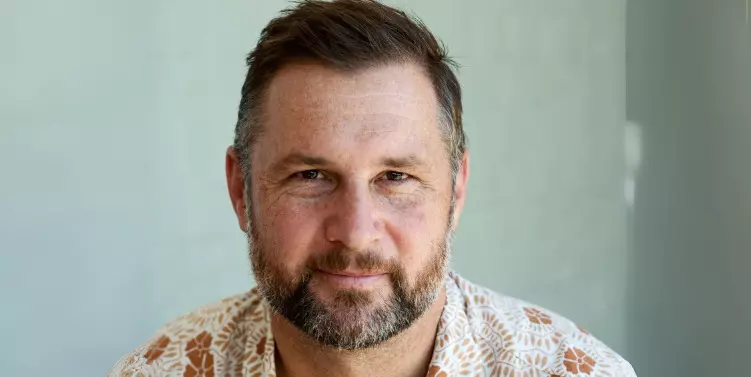We must invest in communities to save lives as natural disasters become more frequent

When we think about managing the impact of natural disasters, we tend to focus on response and recovery. Perhaps unsurprisingly, this attitude is reflected in the funding of natural disaster management, with 97% of funding directed on efforts to clean up and rebuild. In the face of natural disasters becoming more frequent, the CEO of the Northern Rivers Community Foundation, Sam Henderson argues that we need to shift towards a building community resilience and social capital, to better equip communities to respond to floods, fires and other catastrophes.
I had the privilege of attending the Australian Disaster Resilience Conference in August – an event that shone a light on the critical issues surrounding disaster funding and management in Australia. In a country prone to various natural disasters, and with vulnerable and disadvantaged communities bearing a inordinate share, it is essential that we reevaluate our approach to disaster management. The stark reality is that we are spending a disproportionate amount on response and recovery (97%) compared to getting ready (3%). In a world where climate change is exacerbating the frequency and severity of disasters, this imbalance is unsustainable.
Let’s put this in perspective: A 2021 Deloitte report estimated the costs of natural disasters in Australia to be $38 billion each year on average, climbing to a staggering $73 billion by 2060. Yet a mere 3% of this budget goes towards building community preparedness and capability. The Productivity Commission’s 2015 findings make it abundantly clear that our expenditure is heavily skewed towards mopping up the aftermath, leaving a paltry sum for investing in the resilience and strength of our communities. We need to ask the question – where do we need to really invest for the wellbeing and resilience (dare I say survival) of our communities?
Recent events such as the 2022 flooding of the Northern Rivers have highlighted the indisputable value of what I like to call “soft infrastructure.” It’s the intangible asset of community cohesion, preparedness, and commitment that plays an instrumental role in disaster response, recovery, and regeneration. When the hard infrastructure and services were delayed in arriving during these crises, it was the community response that saved lives. Without this communal spirit and dedication, the consequences could have been catastrophic.
The Australian Disaster Resilience Conference vividly displayed this disparity. The convention centre floor was adorned with cutting-edge equipment, emergency vehicles, protective gear, and rescue equipment. The spotlight was on the “hard infrastructure” side of disaster management, and fair play, as these businesses pay for their slots and have products to sell that do protect lives and property.
However, tucked away in a quiet corner was what was called “Resilience Alley.” This unassuming section comprised a handful of small booths, significantly smaller than their commercial counterparts. It served as a poignant reminder of that 97% and 3% divide. It told a story about where the disaster industry and government funding focus attention and resources. The answer is simple: businesses prioritise hard infrastructure because they generate profits. What about those of us who work tirelessly in the community, nurturing an invaluable asset that doesn’t come with a price tag – social capital and community resilience? That’s not a product; it’s a commitment, a lifeline and ultimately, also a life-saver.
During the Lismore floods, community response prevented potentially tens or even hundreds of lives from being lost. This was mirrored recently in the Hawaiian wildfires – community response playing a pivotal role in averting a higher death toll. Yet no one is profiting from these acts of heroism. Without the lure of commercial gain, the system sometimes forgets the importance of social capital and the social license needed for it to function effectively.
The sector is aware of this – I had several conversations with people who work tirelessly on the emergency and “hard side”. They live in these communities too; they understand the strength of social capital; they know that we need a change.
It’s worth noting that the need to bolster the “soft side” of disaster management has been recognised for some time. Resilience NSW, for instance, was established with the intention of building resilience across the state. However, its inglorious demise highlighted the challenge of translating intentions into tangible results. The 2022 NSW Upper House flood inquiry found that despite two years of operation since the devastating 2019/20 bushfires, it achieved little more than establishing a bureaucratic structure and a collection of one-page handouts.
When we consider the entire spectrum of disaster management, from community resilience building and preparation to crisis response, recovery and rebuilding, we must acknowledge that the immediate crisis response is just a small fraction of the whole. To ensure our communities can withstand and recover from disasters, we need to invest in the entire spectrum and across time.
It’s time to shift the paradigm in disaster management. We must rebalance our priorities and allocate resources more equitably between hard and soft infrastructure. The stark figures from the Productivity Commission cannot be ignored any longer. As a community philanthropic organisation, NRCF understands the power of community to address its own challenges and the need to strengthen the social fabric that binds us together. Investing in community resilience, social capital, and preparedness is not just a moral obligation; it’s a pragmatic necessity. The recent disasters in Australia and around the world have demonstrated that the value of soft infrastructure is immeasurable. It’s time to recognise that building resilient communities is not just a noble pursuit – it’s a life-saving endeavour, and it deserves a more significant share of our resources and attention.